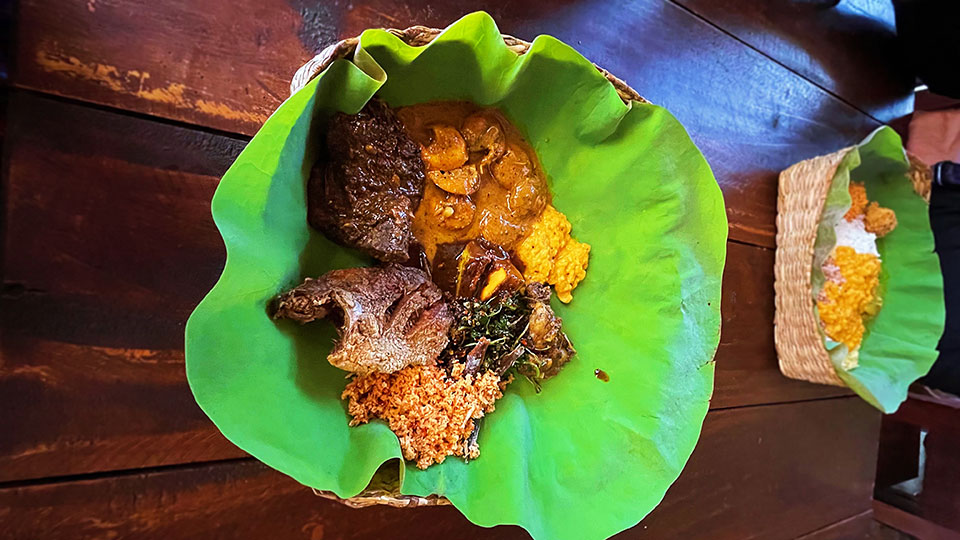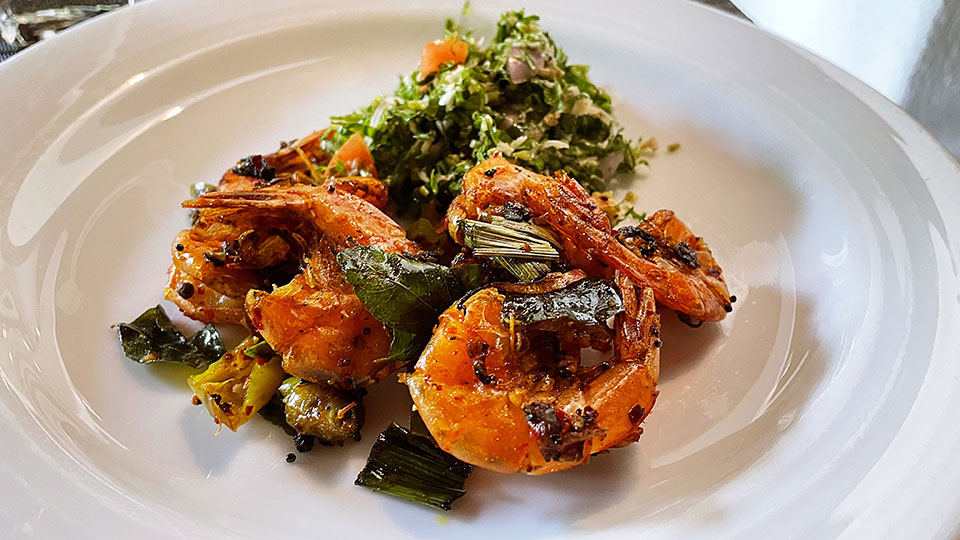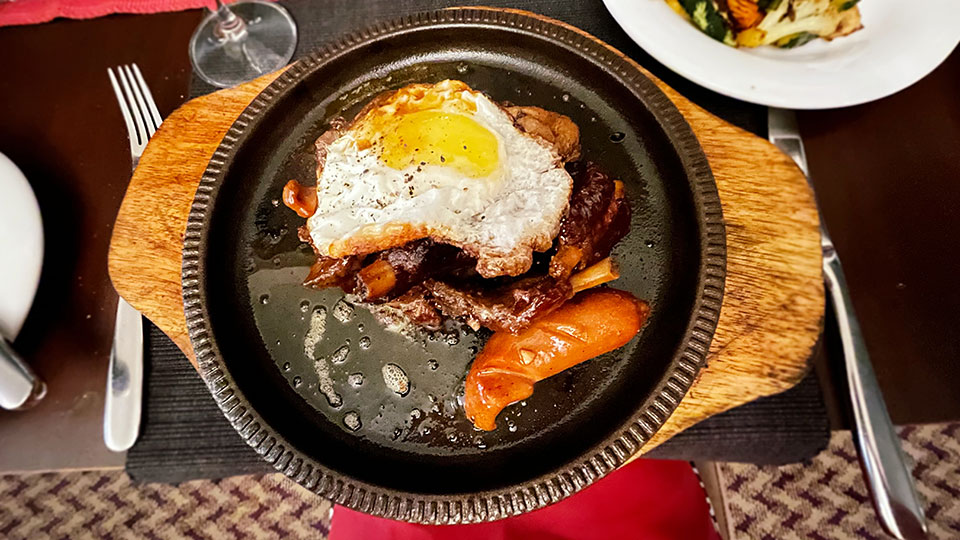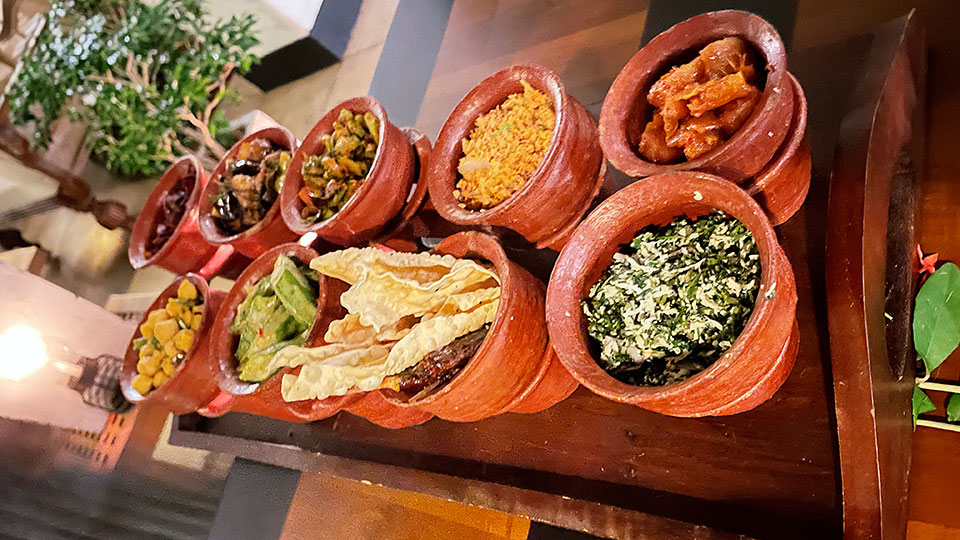The Cultural Ring of Sri Lankan Cuisine
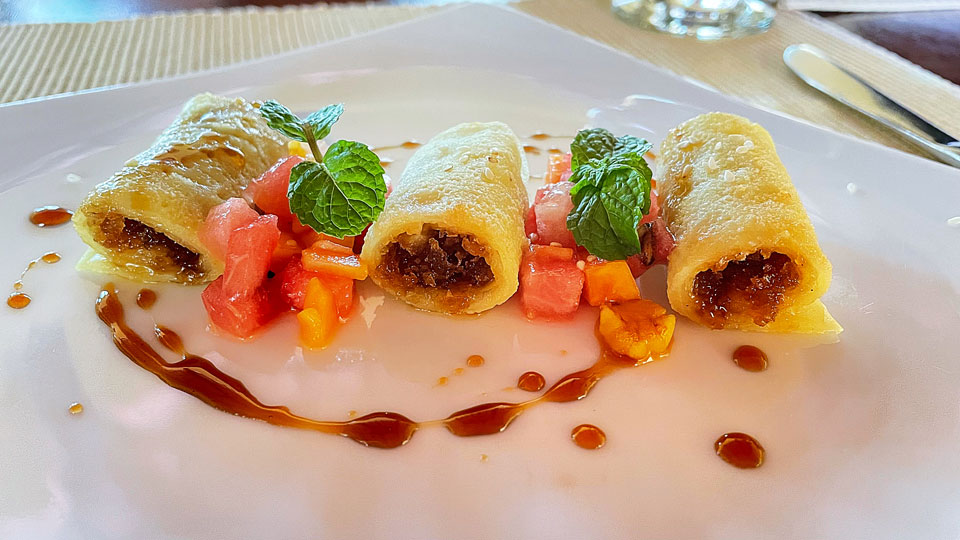
Sri Lankan cuisine is an ode to spices and age-old techniques. Home to time-honored traditional cuisine, Sri Lanka is a marvelous country for those wanting to dig uninfluenced ancient flavors. The mouth-melting food of the island seizes your imagination with its spices, curries, and techniques. Spot on! Besides being flavourful, the rich cuisine of Sri Lanka is also a recollection of the multicultural values it shares with India.
Tamil flavors continue to conquer tastebuds; coconut is a staple and plays a crucial part in almost every dish; Sinhalese cuisine will never fail to surprise you with its sundry oddments. Sri Lanka still maintains the culinary intricacies of its food fortes by using principal spices and time-worn techniques from the time of the Vellalas.
Centuries later, in attendance, the locals still focus on cooking with fresh ingredients, establishing culinary dominance with a precise blend of herbs, vegetables, rice, seafood and fruits. But if you want to taste authentic Ceylon cuisine in its original form, you need to visit some of the local restaurants tucked away on quiet streets. It is hard to steer clear of these age-old recipes when Sri Lanka presents them to you the way it does. Here are a few authentic dishes from Sri Lanka to tickle your tastebuds.
Central Province: Feast on a Plate
The best way to experience the culinary roots of Sri Lanka is to find a traditional buffet, a feast on a plate that embodies different flavours of the cuisine. Every province of Sri Lanka offers its choicest dishes on a platter. But the one from the Central Province is the one worth relishing. Local restaurants like Ambula, Nelum Kole Bath Kade and Rasa Gedara are famous for traditional cooking techniques and offer a memorable food experience. From serving the food on lotus leaves to including the choicest of the menu, these quaint little restaurants have everything planned out.
The meal usually features dishes that you’ve probably not seen before. Some unusual dishes I tasted around here range from carrot leaf and coconut sambol, Mekaral string beans, Polos (young jackfruit) curry, Nelum Ala (curried lotus stem), Murunga, Thibbotu to Mrigal, the lake fish. Habarana Village by Cinnamon left me impressed with its Chicken Kalu Pol, Prawns Baduma, Manioc leaves and Thibbatu Mallum, Banana blossom tempered, and pumpkin mustard curry. Finish off with a Kavum or an Aasmi, typical traditional Sri Lankan desserts. Perfect for extreme gluttony!
Organic Flavours From North
For an offbeat food experience, drive down to the sprawling ten acres farm of Thinnai Organic in Jaffna. In an age where restaurants are busy introducing the concept of modern cuisines, Thinnai Organic decided to prioritise its environmental beliefs. Whether a salad or a curry, Thinnai Organic strives at building a healthier community. So at Thinnai Organic, food is always cooked from freshly sourced farm-grown ingredients. High-quality, chemical-free food for you to relish an authentic Jaffna experience in a relaxed setting. So if you have an appetite for organic foods, this is the place to be.
Together with animal farming, the farm has vegetable and fruit plots where beetroot, cabbage, carrots, eggplants, leeks, winged beans, guava, pomegranate, and banana amongst others, are grown. Everything is organic. I was here on a rainy November day, and Sajith Fernando, the executive chef of this ecotourism centre, regaled me with intellectual nourishment. The lunch menu held the best of Jaffna’s organic and flavourful delights! Featured here are the spicy Naatu Kozhi, a country chicken curry, absolutely delicious mushroom Sothi, devilled chicken, Jaffna style Masoor dal curry and giant river prawns with brown rice. For dessert we had the traditional buffalo curd with palm treacle.
While organic food is costlier than contemporary eats, it shares a holistic approach to environmentally savvy practices. Every nook and corner of Thinnai Organic is dotted, with sustainable designs paired with traditional water conservation systems, eco-minded equipment, and furnishings that work together with organic food. To extend your ecotourism experience, stay in one of the glamping tents of Thinnai, participate in farm-related activities and at night, and luxuriate in star gazing while fireflies’ pirouette around the farm. This place is only thirty minutes from central Jaffna.
Far East Rub
The Eastern province of Sri Lanka is prospering with restaurants that serve some of the best seafood and traditional cuisine you will taste on the island. Famous for its fresh seafood, the port city of Trincomalee is renowned for its special spicy crab curry, egg and chicken Kottu, capsicum with eggs, jumbo prawns, Maldive fish, tropical lobsters, and fresh grilled calamari. Also, try banana porridge for breakfast and avocado Rotti with fried dried fish and red snapper curry for one of the meals. To eat like a Trincomalian, get your hands on deep-fried prawn or Ulundu wade from the Wade Cart. These usually come in a paper bag full of chillies and are best enjoyed at a beach.
The West Coast Flavours
Negombo introduced me to the west coast of Sri Lanka, which has the remains of a 17th-century Dutch Fort, and the Dutch-era Hamilton Canal that feeds into Negombo Lagoon studded with fishermen huts. The Western Province offers a wide range of cuisines, from Ayurvedic to continental. The authentic Sri Lankan flavours, on the other hand, are not to be missed. You will find the freshest seafood at Coral Reef in Moragalla, Waskaduwa in Kalutara and Heritage and Jetwing in Negombo. These eateries serve delectable, traditional food from Sri Lanka’s west coast, with a fantastic, distinctive twist! Not to be missed are curry and red rice, lobsters, Mallung, crabs, Ekor Sop, spicy chilli cuttlefish, prawns, Babath, butter garlic fish, and pol roti with pork.
The Cosmopolitan South
Overlooking the blue ocean, Galle and Bentota on the Southern turf gave me an entirely different experience at food. The southern province of Sri Lanka is ‘largely influenced, by the Dutch and the Portuguese culture, and its food is no exception. From sumptuous seafood platters to wholesome food local to Sri Lanka, this side of the island gives you a fine cosmopolitan experience. If you want to go off the unfrequented track and experience south province like a local; grab a crab or a Sashimi from The Tuna & The Crab; taste Tangalle Tuna at a local restaurant; and sample the bento box meals.
The burgeoning food culture of the South can be best experienced at cafes hiding in a courtyard behind the main road. Continental delights butternut fritters and carrot cake; local specialities, Fish Ambul Thiyal, Kottu Rotti, string hoppers potato curry, Polos, Wambatu Moju and Thosai are a must-try! Galle has ice cream and dessert parlours that can measure up to those in metropolitan cities. Several interesting restaurants serve great seafood at the stretch of Unawatuna Bay. Although most open post 10 am.
Trying new food is the best part of travelling, and I ate my way from the North to the South, on a quest to discover the local flavours. My trip to the Pearl of the Indian Ocean introduced me to some new dishes and flavours. Before this year, I’d never eaten an Ambul Thiyal, Wambatu Moju or a polo. I never would have tried it if, I hadn’t been eating local food. This article is for you if you’re wondering what to eat in Sri Lanka on your next trip! Wherever you go, the local cuisine is unique, and there is always something new to explore. Two words – satisfying flavors!
Written by Veidehi Gite.
Have you read?
# Best CEOs In the World Of 2022.
# TOP Citizenship by Investment Programs, 2022.
# Top Residence by Investment Programs, 2022.
# Global Passport Ranking, 2022.
# The World’s Richest People (Top 100 Billionaires, 2022).
# Satya Nadella: The most successful CEO of the Tech industry.
Add CEOWORLD magazine to your Google News feed.
Follow CEOWORLD magazine headlines on: Google News, LinkedIn, Twitter, and Facebook.
This report/news/ranking/statistics has been prepared only for general guidance on matters of interest and does not constitute professional advice. You should not act upon the information contained in this publication without obtaining specific professional advice. No representation or warranty (express or implied) is given as to the accuracy or completeness of the information contained in this publication, and, to the extent permitted by law, CEOWORLD magazine does not accept or assume any liability, responsibility or duty of care for any consequences of you or anyone else acting, or refraining to act, in reliance on the information contained in this publication or for any decision based on it.
Copyright 2024 The CEOWORLD magazine. All rights reserved. This material (and any extract from it) must not be copied, redistributed or placed on any website, without CEOWORLD magazine' prior written consent. For media queries, please contact: info@ceoworld.biz
SUBSCRIBE NEWSLETTER



